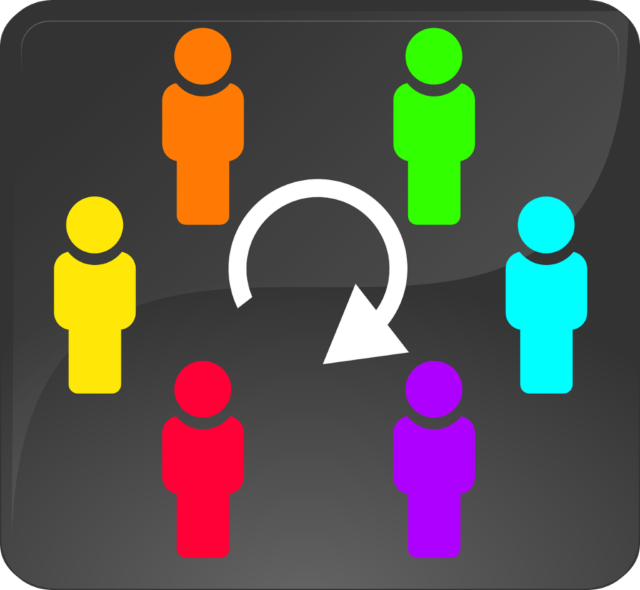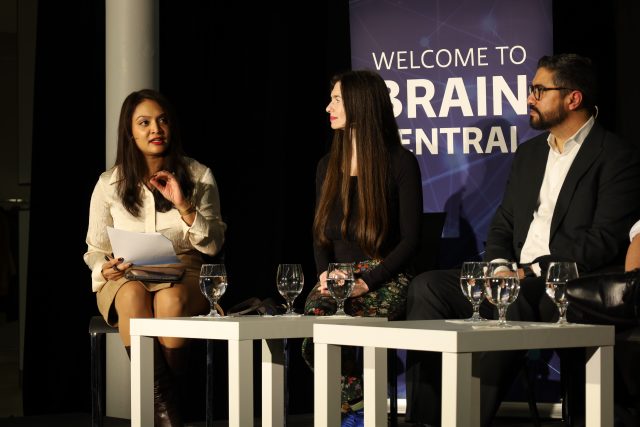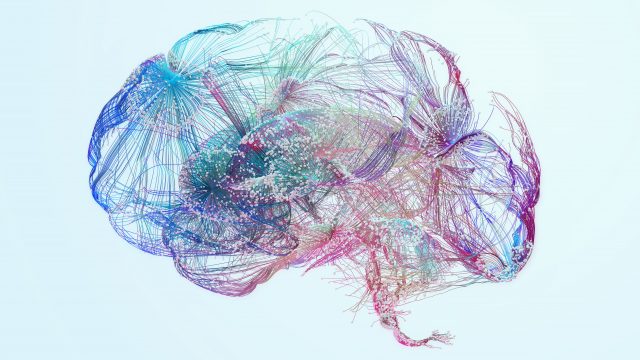By: Teige Bourke, Outreach Intern, Ontario Brain Institute
Brain disorders are not straightforward. Disorders like depression result from a complex interplay between an individual’s experiences and their biology. Understanding the underlying mechanisms requires a lot of information that can only be extracted through research that uses many different techniques with large groups of people.
Before the data collection process begins, it’s important to think about how it will be stored, managed, and most importantly, maximized. For the Ontario Brain Institute (OBI), the best way to make to make use of data is to agree to share it from the outset. It may sound easy at first, but a lot of work goes into establishing a system where data can be shared. The benefits that data sharing reaps go beyond establishing a team approach to science—in many ways it improves the quality, efficiency and outcomes of research.
OBI’s central database, the Centre for Ontario Data Exploration (Brain-CODE), was created to help more than 200 researchers at over 35 institutions across Ontario share their data. The state-of-the-art database is designed to store, manage, and analyze the many different types of data collected by researchers around the province. These are just a few key areas where Brain-CODE really shows its value:
Standardizing Different Types of Data
OBI’s depression research program, the Canadian Biomarker Integration Network in Depression (CAN-BIND), uses a multi-technique approach to identify biological markers, or ‘biomarkers’, and predict treatment response. This aims to get us away from the trial and error process that can be involved in finding the right treatment. To predict treatment response, researchers need a way to collect large amounts of data from many participants, across many sites, using many different techniques while ensuring that all data is compatible—Brain-CODE allows them to do that.
One important component of the data sharing process involves standardizing the tools and assessments researchers use to collect information. By working with researchers and clinicians to come to a consensus, this enables studies to use the same methods and combine data. CAN-BIND has recently published their research methods that detail how the program uses a wide variety of techniques to find biological markers that indicate how people with depression respond to different treatments such as antidepressants. Only by using standard methods at sites across Canada can CAN-BIND collect compatible datasets to identify predictive markers of treatment response. This legwork ensures that CAN-BIND’s findings are more likely to be applied by the wider research community and in follow-up clinical applications.
Discovering new Clues
Data sharing also allows researchers to see important differences between participants that may have been missed otherwise. Our Province of Ontario Neurodevelopmental Disorders (POND) Network is investigating the biological differences and similarities between people with neurodevelopmental disorders. This allows researchers to discover shared biological mechanisms underlying these disorders in groups of individuals, regardless of their specific diagnosis. For instance, POND researchers recently discovered that changes in the strength of connections between different brain regions relate to the severity of behavioural symptoms like social difficulties and attention problems, regardless of the child’s diagnosis. These new biological markers may lead to new tools for diagnosis and new targets for treatments.
Maximizing the Value of Participation in Research
Study participants often go through the lengthy process of pre-study screening, travel, assessments, and follow-up visits—all to answer one research question. This data is often summarized or averaged in some way in the final research article, making it very difficult for another researcher to use the data directly to answer new questions. By sharing high-quality data, different studies may be able to use the same data sets to ask entirely different questions, multiplying the value of each individual’s participation in research. The Sunnybrook Health Sciences’ Brain-Eye Amyloid Memory (BEAM) study is using the same methods as OBI’s Ontario Neurodegenerative Research Initiative (ONDRI). This allows both groups to share data from 100 participants. By having both studies use Brain-CODE, the studies save costs and participants’ valuable time. Sharing data gives new life to existing information, while allowing participants to make a larger contribution to healthcare through their involvement in research. Imagine a future where research studies could access large amounts of data without ever having to recruit participants.
Uncovering Commonalities Between Different Disorders
Tools like Brain-CODE also open up the possibility of exploring common biomarkers and biological mechanisms across different disorders. For instance, over 20% of children who have cerebral palsy also have epilepsy. Similar to findings from POND, there might be important biological similarities and differences between participants in OBI’s cerebral palsy (the Childhood Cerebral Palsy Integrated Neuroscience Discovery Network) and epilepsy (the Epilepsy Research Program of the Ontario Brain Institute) research programs. This may reveal important insights into common biological mechanisms underlying both disorders in some individuals, and lead to new clinical tools.
Ensuring Data Quality
Data sharing also ensures studies are careful about their data quality and transparent about their findings. Studies that share their data have fewer errors and more robust statistical effects1. Furthermore, when studies share their findings, there is the potential to learn from the data even if it did not fit the researcher’s hypothesis—unlike the estimated 50% of biomedical studies that remain unpublished2. The benefits of data sharing are starting to be appreciated and applied worldwide through initiatives like the Allen Observatory and the Human Brain Project.
Inspiring More Open and Collaborative Science
The benefits of a platform such as Brain-CODE are now inspiring other organizations to invest in a similar type of data sharing. The Centre for Addiction and Mental Health (CAMH) recently announced that they will be building a neuroinformatics platform based on Brain-CODE. As the use of data sharing platforms continues to grow, opportunities to use these platforms in innovative ways will continue to multiply. To learn more about Brain-CODE or OBI’s research programs, please visit: www.braininstitute.ca. Together we can answer big questions about the brain and brain disorders, and start seeing the benefits for everyone’s brain health.
- Wicherts, J.M., Bakker, M. & Molenaar, D. PLoS ONE 6, e26828 (2011).
- Chan, A.W. et al Lancet 383, 257-266 (2014).


